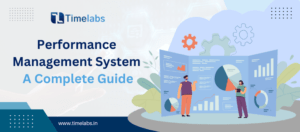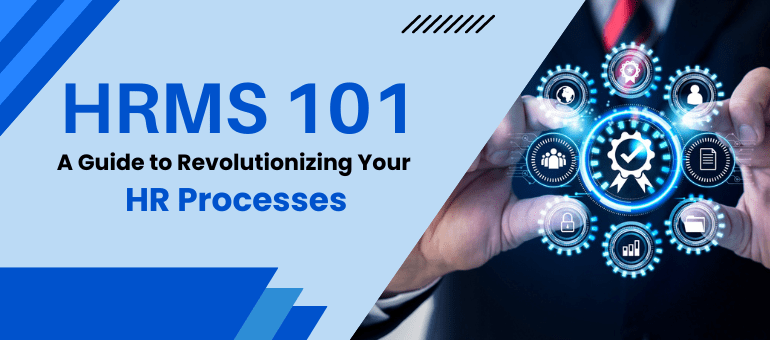In today’s dynamic and collaborative work environment, building high-performing teams requires more than hiring skilled professionals and setting clear goals. It involves nurturing a culture of continuous improvement, open communication, and mutual accountability. One of the most effective tools supporting this culture, especially within modern Performance Management systems, is 360-degree feedback.
Widely adopted by forward-thinking organizations and often integrated within comprehensive HRMS (Human Resource Management Systems), 360° feedback offers valuable insights into individual and team performance from multiple perspectives. Unlike traditional top-down appraisals, this method collects feedback from managers, peers, subordinates and sometimes even clients. The result is a more holistic understanding of an employee’s strengths, development needs and workplace behavior.
What is 360° Feedback?
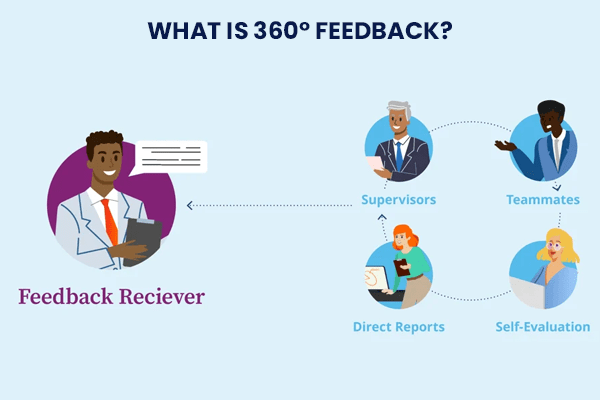
360° feedback is a performance evaluation method where an employee receives confidential feedback from people they work with regularly—this typically includes supervisors, colleagues, direct reports and occasionally external stakeholders. Individuals also assess themselves, allowing for a comparison between self-perception and the perception of others.
This method is particularly effective for evaluating soft skills such as leadership, teamwork, communication and emotional intelligence—traits that are crucial for team success but often under-emphasized in traditional Performance Management reviews.
How 360° Feedback Enhances Team Performance
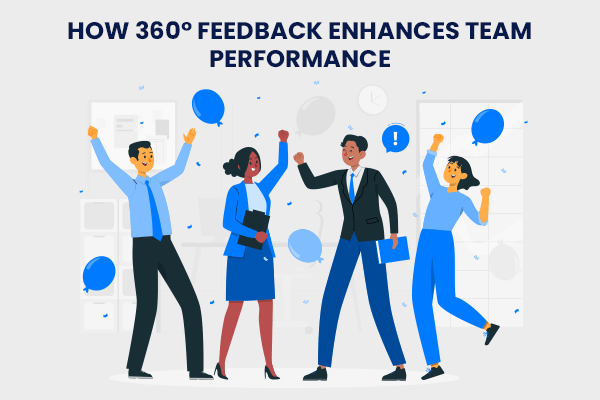 1. Comprehensive Performance Insights
1. Comprehensive Performance Insights
Traditional performance reviews usually reflect the opinion of just one manager, which can result in limited or biased feedback. 360° feedback provides a more balanced and complete picture by incorporating multiple viewpoints. This multi-source input leads to more accurate evaluations and well-informed development plans.
2. Encourages Self-Awareness
By comparing self-assessment with external feedback, employees can identify perception gaps and gain a clearer understanding of their behaviors and their impact on others. This clarity often becomes the first step toward meaningful personal growth and behavioral change.
3. Promotes a Culture of Continuous Improvement
When feedback becomes a regular part of the work environment, employees begin to see it as an opportunity for growth rather than criticism. Over time, this cultivates a mindset of learning and adaptability across the entire team.
4. Builds Stronger Interpersonal Relationships
Teams that engage in structured feedback processes develop deeper mutual understanding and trust. By learning how they are perceived by others, team members can adjust their communication and collaboration styles to work more effectively together. As empathy and clarity increase, team cohesion and morale naturally improve.
5. Enhances Accountability
Knowing that feedback will come from multiple sources often leads employees to take greater responsibility for their actions. Peer evaluation encourages individuals to maintain high standards, be reliable and contribute meaningfully to the team. This shared accountability boosts performance and helps maintain a productive team culture.
6. Reduces Bias in Evaluations
360° feedback minimizes the influence of personal bias or favoritism by including a variety of perspectives. This results in more equitable evaluations and helps leaders make fairer decisions about promotions, development and recognition. It promotes trust in the review process and strengthens perceptions of fairness and transparency.
7. Identifies Hidden Strengths and Untapped Potential
This feedback method can reveal qualities that traditional reviews might overlook. For example, a colleague might consistently demonstrate leadership under pressure, which may go unnoticed by managers. Recognizing these strengths allows organizations to harness untapped potential and better align individuals with roles that suit their abilities.
360° Feedback Within Modern HRMS Solutions
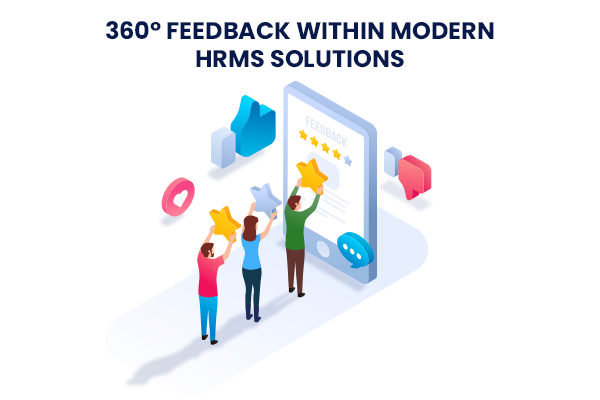
Modern HRMS platforms are evolving to include robust Performance Management modules that support 360° feedback integration. These systems automate the collection, analysis and reporting of feedback data, making the process seamless and scalable—even for large teams.
With built-in analytics and intuitive dashboards, HR teams and managers can track trends, benchmark performance and design personalized development plans more effectively. The result is a smarter, data-driven approach to managing and optimizing team performance.
Applications Beyond Performance Reviews
The benefits of 360° feedback extend beyond yearly appraisals. It can be embedded within broader Performance Management strategies to support:
- Leadership Development: Identifying emerging leaders based on well-rounded feedback.
- Succession Planning: Highlighting talent ready for future leadership roles.
- Training and Development: Pinpointing specific skills that need improvement across teams.
- Team Diagnostics: Addressing communication issues or performance bottlenecks at a team level.
Best Practices for Implementing 360° Feedback
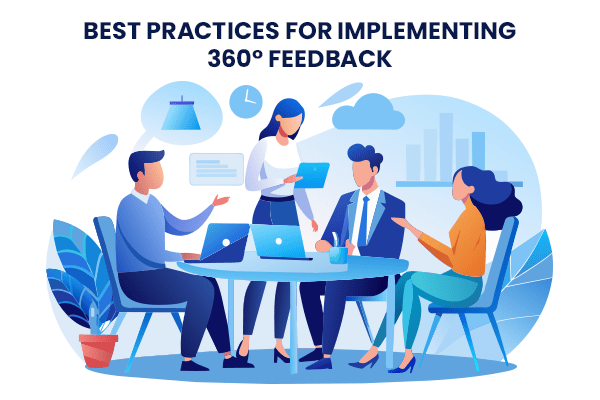
To get the most out of a 360° feedback system, organizations should follow these best practices:
- Ensure Anonymity and Confidentiality: This encourages honest and constructive feedback.
- Clearly Communicate the Purpose: Help employees understand that feedback is for development, not punishment.
- Provide Training: Teach participants how to give and receive feedback in a professional and respectful manner.
- Follow Up with Action Plans: Feedback should be translated into achievable goals and developmental strategies.
- Use Technology: A reliable HRMS can simplify the process of collecting, analyzing, and visualizing feedback data.
Must Read: Is Your HR System Ready for 2025–26? 5 Reasons to Switch to Timelabs Now
Challenges and How to Overcome Them
While powerful, 360° feedback is not without challenges:
- Risk of Misinterpretation: Feedback without context can be confusing. Providing coaching or feedback summaries can help.
- Resistance to Feedback: Some employees may feel threatened. Creating a culture of psychological safety is essential.
- Data Overload: Too much information can be overwhelming. Highlight key takeaways and actionable insights to maintain clarity and focus.
Conclusion
360° feedback, especially when embedded within a modern HRMS and aligned with a strategic Performance Management approach, becomes more than just a review tool—it transforms into a driver of organizational excellence. It promotes self-awareness, strengthens collaboration and unlocks untapped potential by offering a multidimensional view of performance.
Organizations that leverage this feedback mechanism position their teams to be more agile, accountable and aligned with long-term goals. In a world where performance and adaptability are critical to success, 360° feedback truly is the secret weapon of high-performing teams.

